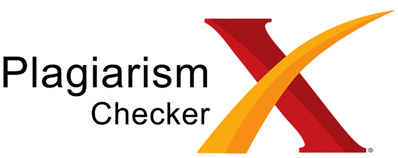Story Mapping Strategy to Teach Reading Comprehension Achievement
DOI:
https://doi.org/10.30599/channing.v4i2.747Keywords:
Story mapping strategy, Reading ComprehensionAbstract
The objective of this study was to find out whether or not there are any significant differences between students who are taught by using story mapping strategy and students who are not taught by using story mapping strategy in teaching reading comprehension at the tenth-grade students of MA Subulussalam OKU Timur. This study used an experimental method, by quasi-design. Meanwhile, the population was the tenth-grade students of MA Subulussalam Oku Timur with total students were 151. The sample was 71 students, consist of two groups, namely experimental class consist of 34 students, and control class consists of 37 students which chosen by using purposive sampling. In this study, the writer used SPSS 16 to analyze. The result of this research shows that the story mapping strategy was effective in teaching reading comprehension at the tenth-grade students of MA Subulussalam OKU Timur.
Downloads
References
Cook, G. (2003). Applied Linguistics. New York: Oxford University Press.
Creswell, J. W. (2012). Educational Research: Planning, Conducting and Evaluating Quantitative and Qualitative Research (4th ed.). Boston: Person Education, Inc.
Hidayati, D. N. (2016). Supersmart Book Bahasa Inggris. Yogyakarta: PT Bentang Pustaka.
Jackson, N. R., & Pillow, P. L. (1992). The Reading-Writing Workshop: Getting Started. New York: Scholastic Inc.
Maxom, M. (2009). Teaching English as a Foreign Language for Dummies. England: John Wiley & Sons, Ltd.
Oxford, R. L. (1990). Language Learning Strategies: What Every Teacher Should Know. Boston: Heinle and Heinle.
Pang, E. S., Muaka, A., Bernhardt, E. B., & Kamil, M. L. (2003). Teaching Reading. Switzerland: The International Academy of Education.
Pourhoseingilakjani, A. (2016). How can Students Improve Their Reading Comprehension Skill? Journal of Studies in Education, 6 (2), 229-240.
Sayeski, K., & Paulsen, K (2003). Early Reading. Retrieved from http://iris, Peabody. Vanderbit.edu/wp/upload/pdf_case_studies/icsearrd.pdf.
Sholichah, N. I. (2017). The Effect of Story Mapping on Reading Comprehension. Jurnal Penelitian Ilmiah Intaj , 30-48.
Sholichah, N. I. (2017). The Effect of Story Mapping on Reading Comprehension. Jurnal Penelitian Ilmiah Intaj , 30-48.
Snow, C. (2002). Reading for Understanding: Toward an R&D Program in Reading Comprehension. Santa Monica: RAND.
Sofyan, M. (2017). The Influence of Readers' Perior Knowledge in Comprehending English Text. Thesis. Faculty of Tarbiyah and Teacher Training Islamic State University of Ar-Raniry, Banda Aceh.
Sugiyono. (2013). Metode Penelitian Pendidikan Pendekatan Kuantitatif, Kualitatif, dan R&D. Bandung: Alfabeta.
Sugiyono. (2015). Metode Penelitian Kombinasi (Mix Methods). Bandung: Alfabeta.











